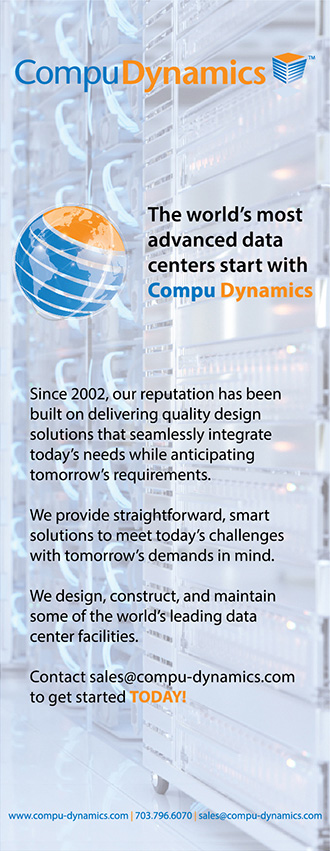Today, I live in Herndon, Virginia, minutes away from Data Center Alley where 70 percent of the world’s Internet passes through. I take pride in my community and the digital infrastructure industry, which are both a big part of my life. My nephew Palmer Denny broadened my perspective on the relationship between my industry and community over a family dinner last spring. He’d taken his first job out of high school as an assistant to a local government official in neighboring Prince William County and was concerned about the expansion of data centers there. His constituents felt that data centers encroached on their homes, made too much noise, consumed too much power, and disrupted historical landmarks. I was inspired to see him care about my industry’s impact on his community and reach out courageously and engage with me, to try to understand my point of view and learn how we can work better together.
My nephew personalized the pushback the digital infrastructure industry is encountering in communities where data centers are clustered around the world and highlighted the need for our industry to be better neighbors. I thought back to this experience when I was tapped on the shoulder to lead an industry effort to create a framework to help the data center industry be a good neighbor in the local communities where digital infrastructure is deployed. It is an exciting opportunity for me to help the data center industry hear the voices of people like Palmer and build the bridges needed to support the expansion of digital infrastructure that’s become as critical to any community as its local food markets, schools, and hospitals. My goal is to move data centers from “being in the communities” where they are built and operated to being “of the communities.” To be “of the community” implies a deep connection and integration with the community. It means doing more than just operating at an address in the community. It means sharing the values of the community and caring for the well-being of the people in the community—and the ecosystems that sustain it. It means supporting local causes, hiring from the local talent pool, and enhancing local ecosystem services. Our goal is for the data center industry to engage proactively with communities to understand their needs. Those community needs will vary based on their location, culture, economy, education, and more. Understanding and appreciating these concerns is the only way we can achieve economic, social, and ecological balance in the communities where digital infrastructure is deployed today and will be deployed tomorrow.
To achieve this goal, our industry workgroup is developing a guidebook for community engagement that can be applied in any local community, from the emerging data center market of Lagos, Nigeria, to the established data center market of Loudoun County, Virginia. The framework was inspired by the United Nations Sustainable Development Goals, which are a universal call to action to end poverty, protect the planet, and ensure that by 2030 all people can enjoy peace and prosperity. The SDGs are a blueprint for how to achieve a better and more sustainable future for everyone by addressing some of the big global challenges related to poverty, inequality, climate change, environmental degradation, peace, and justice.

Our workgroup’s framework approaches the SDGs through the lens of economic, social, and ecological dimensions. From the economic perspective, data centers contribute significantly to the local economy of communities. They are typically multimillion-dollar investments in the community that create direct jobs in operations and maintenance and many more indirect jobs in areas like construction, hospitality, and business creation. On the social front, tax receipts from the data center industry enable improved and equitable access to education and healthcare, improve food security, and enhance social and emergency response systems. On the ecological dimension, data centers are at the forefront of sustainability and enable solutions that avoid and reverse the impacts of environmental degradation in communities. This framework is the basis for the Social Accord to achieve economic, social, and ecological balance in the communities where data centers are deployed.
As I think back to the dinner with my nephew, I’m reminded that community members may not understand the data center industry in the same way they understand the importance of their local grocery stores and farmers markets that put food on their table, or the power company that keeps the lights on at their home, or the water utility that keeps them alive. The reality is that digital infrastructure is just as critical. Data centers provide the digital services community members depend on every day for video calls to family and friends, accessing work documents from anywhere, streaming music and movies, facilitating the development of life-saving vaccines, and leveling the playing field for everyone to have access to connectivity, education, and opportunity. Our goal with the guidebook is to establish a framework for responsible, sustainable, and community centered data center expansion. My hope is that data center developers will consult this guidebook for strategies to integrate digital infrastructure into every community cohesively and ensure continued, balanced growth for the industry and communities.
ABOUT THE AUTHOR
Cyre Denny leads a global team across 40 countries to establish and drive organizational vision, operational strategy, and business growth. Her business and analytical skills help her see both the big picture and the intricate details that are needed to make strategic programs successful. She has over 15 years of experience working with Fortune 500 companies and leveraging her unique background, leadership, and forward-thinking approach to ensure that the future of digital infrastructure is both dynamic and inclusive.
Denny is also the Data Center Dynamics 2024 Data Center Woman of the Year, which demonstrates her unique ability to push the boundaries of technology and pave the way for inclusivity and innovation. Those who know Denny greatly admire her energy, effort, and enthusiasm. Her unyielding commitment to building or operating robust, scalable, and sustainable solutions and digital infrastructure has empowered businesses and connected communities.
Denny volunteers extensively with Schneider Electric and in the larger data center community. She is the President of the LatinX Community for iMasons that enhances education opportunities, champions diversity and inclusion, promotes innovation and technical excellence, and inspires sustainability in the digital infrastructure industry. She is also Vice President of the New York City iMasons chapter and is a member of the Hispanic Information Technology Executive Council, through which she mentors young Hispanic professionals and students across the globe.



